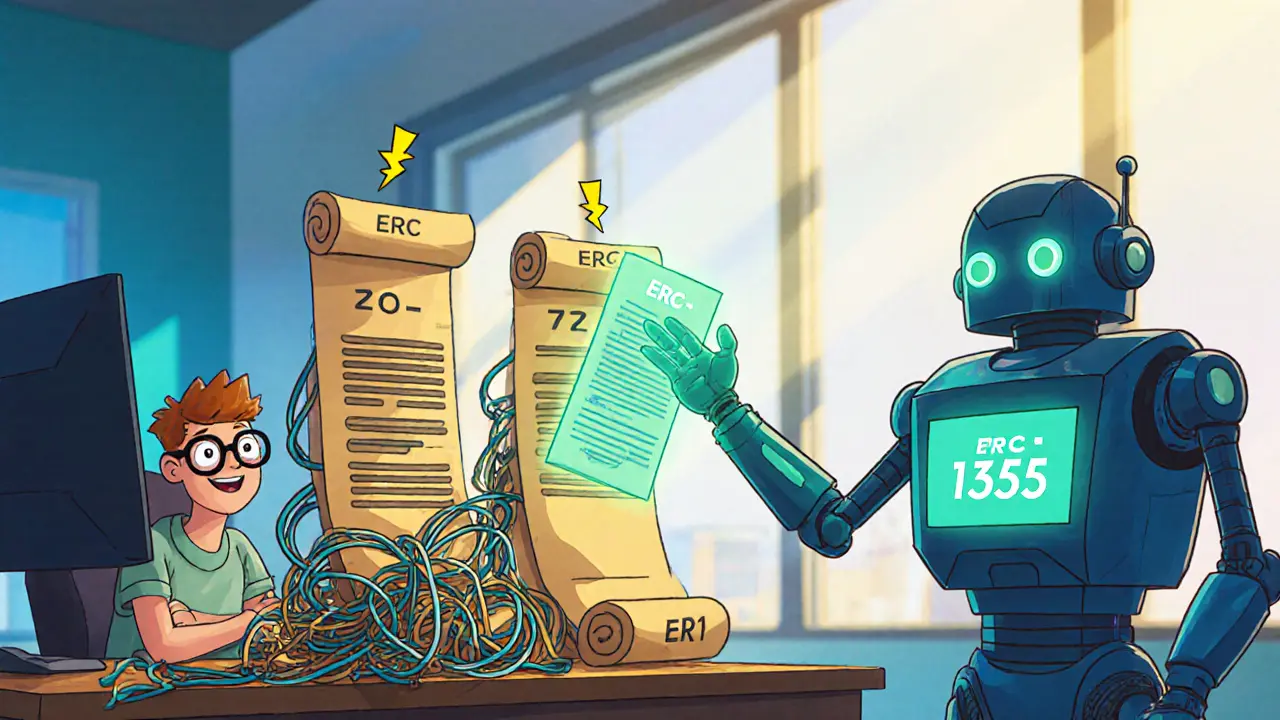Learn what ERC-1155 is, how it works, and why it matters for gaming, NFTs, and multi-asset token projects. Get a technical overview, comparison with ERC-20/721, implementation tips, and future outlook.
ERC-1155: The Multi‑Token Standard Shaping NFTs and Gaming
When working with ERC-1155, a flexible token standard on Ethereum that supports both fungible and non‑fungible assets in a single contract. Also known as the multi‑token standard, it lets creators issue many token types without deploying separate contracts. Closely tied to NFT, unique digital collectibles or assets stored on a blockchain, and driven by smart contracts, self‑executing code that enforces token rules. In the world of blockchain gaming, games that use decentralized tokens for items, characters, and economies, ERC-1155 is the glue that holds everything together.
One core idea is that ERC-1155 encompasses both fungible and non‑fungible token types. This means you can mint a batch of in‑game gold coins (fungible) alongside a set of unique swords (non‑fungible) in a single transaction. The standard requires a single smart contract to manage all these assets, which cuts down on deployment complexity. By allowing batch transfers, it reduces gas fees dramatically—developers report savings of up to 90% compared to using separate ERC‑20 and ERC‑721 contracts.
Because NFTs rely on smart contracts to verify ownership, the efficiency of ERC-1155 directly benefits the NFT market. Artists can drop a whole collection of artworks, each with its own metadata, while collectors receive multiple pieces in one go. This batch capability enables quicker minting events and smoother secondary‑market sales, which is why many new NFT platforms adopt ERC-1155 as their default.
In blockchain gaming, the ability to handle many token types at once is a game‑changer. Imagine a role‑playing game where a player’s inventory contains gold, health potions, and a legendary armor piece—all tracked under one contract. The game engine can query the contract once, fetch balances for all items, and update the UI instantly. This relationship between ERC-1155 and gaming reduces latency and improves the player experience, encouraging developers to build richer economies.
Marketplaces have also built tooling around the multi‑token standard. Popular exchanges now show batch listings, letting sellers bundle several NFTs together. Wallets support multi‑token displays, so users see all their assets in one view. These ecosystem upgrades support broader adoption because they lower the barrier for both creators and collectors.
For developers, the biggest considerations are security and metadata handling. Since one contract holds many token IDs, a bug can affect all assets. Following best practices—like using OpenZeppelin’s audited ERC‑1155 implementation and separating metadata URIs per token ID—keeps risks in check. Planning the token ID scheme early helps avoid collisions and makes future extensions easier.
Below you’ll find a curated list of articles that dive deeper into each of these aspects. Whether you’re curious about the technical details, looking for a step‑by‑step guide to launch your own ERC‑1155 collection, or want to see real‑world gaming use cases, the posts below cover the full spectrum of what this versatile standard can do.





